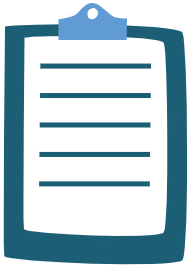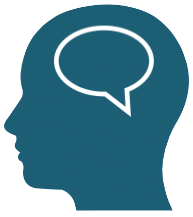The more physical distance between the teacher and the learner, the more challenging it is to collect formative assessment data consistently. I’ve taught in person, online, and in blended learning environments. The aspect of teaching that is hard to replicate in the online environment is the teachers’ ability to collect informal data by merely listening and observing.
Teachers learn so much from listening to their students engaging in conversation or observing them as they work through a problem or task. Teachers can pop in and out of breakout rooms while students discuss academic topics and collaborate around shared tasks, but it isn’t the same as walking around a classroom with watchful eyes and attentive ears.
Even though collecting informal data may be more challenging online or in a concurrent classroom composed of a group of students in class and another group online simultaneously, it’s critical that teachers understand where students are and what they need to continue making progress. The more formative assessment data a teacher collects, the more effective they’ll be in differentiating learning experiences to meet a diverse group of students’ needs.
How can we effectively weave formative assessment into the design and facilitation of learning regardless of the teaching and learning landscape?
#1 Articulate Clear Learning Goals and Objectives
The first step in using formative assessment effectively is to articulate clear learning goals and objectives. Teachers and students will need a clear understanding of what they are working toward if they are going to measure student progress accurately.
- What will students understand (content knowledge) or be able to do (skills) at the end of the lesson or learning cycle?
- What will success look like when students meet those learning objectives?
- Can you craft success criteria that you can measure progress against?
The standards guide teachers as they design learning experiences for students; however, the standards are not written in student-friendly language. It’s helpful to dissect the standards, identify the parts, and use those to create success criteria in order to create clarity for students about what they are working toward. Success criteria can help teachers and students measure progress in relation to those standards.
For example, an argumentative writing standard for English Language Arts reads, “Write arguments to support claims in an analysis of substantive topics or texts, using valid reasoning and relevant and sufficient evidence.” If I were to break that standard down into specific success criteria to share with students, it might include:
- Use what you know about the topic/text to write a clear claim
- Use your understanding of the topic/text to select strong quotes, or textual evidence, to support your claims
- Introduce your quotes
- Cite your quotes properly
- Explain how the quotes or textual evidence support your claim
- Use strong word choice in your writing
Teachers working with younger students will want to tease out specific learning objectives and success criteria for them. Teachers working with older students may want to challenge them to work collaboratively to discuss specific standards or learning goals and rewrite them in student-friendly language. Then they can work collaboratively to discuss what that standard might look like broken up into clear success criteria. This process drives deeper thinking about what they are working toward in a given lesson or learning cycle.
#2 Assess Prior Knowledge
Learning isn’t like lining up for a race. Students do not stand shoulder to shoulder. Some students are out ahead of the class in terms of their prior knowledge because of a class they took, a book they read, a trip they went on, or a conversation they had with a family member. Other students may not have any prior knowledge on a topic.
It’s crucial to figure out where students are beginning their learning journeys to design learning experiences to meet them where they are at.
- What do you know or think you know about this topic?
- Where did you learn this information?
- What questions or wonderings do you have about this topic?
Teachers can use a variety of strategies to assess prior knowledge in class or online.
| Asynchronous Online Discussions | Engage students in a video-based (FlipGrid) or text-based (LMS) discussion designed to share their prior knowledge on a topic. This exposes them to the diversity of experience in the classroom. |
| Word Association Game | Present students with a word or phrase (e.g., quadrilateral, cubism, Harlem Renaissance, symbolism) and ask them to share three things that come to mind when they hear that word. Teachers can use Mentimeter to create a real-time word cloud that enlarges the most frequently shared words. |
| Entrance Ticket | Design a simple entrance ticket to assess what students know or think about a topic, identify aspects of the topic they are interested in or curious about, and share questions they have about the topic. |
| Draw What You Know | Ask students to surface their prior knowledge with a drawing (for younger learners) or a sketchnote (for older learners). Encourage them to identify the main ideas or concepts related to the topic and visually show how they are related. |
Assessing prior knowledge helps teachers identify misconceptions that need to be addressed and gaps that need to be filled during the learning cycle. It can also help teachers to understand what students already know or can do, so they don’t dedicate too much time to repeat instruction or practice.
#3 Design Learning Experiences
As teachers analyze the data collected during the assess prior knowledge activity, they can more effectively design learning experiences to meet the students’ needs effectively. For example, if the data reveals a wide range of prior knowledge in relation to specific concepts or skills, the teacher may want to use the station rotation model to work with small groups of learners. That way, the teacher can provide the necessary level of support and scaffolding for each small group.
| What? | How? | Why? |
|---|---|---|
| The Whole Group Rotation | The entire class rotates between online and offline learning activities as a unit. The online time can be personalized based on a student’s needs and free the teacher to provide additional support or instruction for an individual student or a small groups of learners. | This model works well if the teacher plans to present the same information to the whole group in the offline, teacher-led parts of the lesson; however, the online work provides opportunities for personalized practice using adaptive software or online resources. |
| The Station Rotation Model | Students move through a series of online and offline stations, or learning activities. Typically, a station rotation is composed of a teacher-led station, online station, and offline station; however, the number of stations can vary. | This model is ideal for offering differentiated small group instruction to address a wide range of skills and abilities. Teachers can also use the teacher-led station to guide practice, engage learners in interactive modeling sessions, and provide real-time feedback. The other stations can provide peer support and present tasks at different levels of academic rigor. |
| The Flipped Classroom Model | Students watch video explanations and models either in class or online to control the pace at which they consume and process the new information. | This model frees the teacher from spending significant time transferring information at the front of the room. Instead, this model shifts basic explanations or models that all learners need to hear or see online with video. This allows the teacher to spend more time supporting application and connecting with individual or small groups of learners. |
| The Playlist Model | Students have a playlist of learning activities they self-pace through. The path of the playlist can be differentiated or personalized to better meet students where they are at in terms of content knowledge and skills. | The teacher is “value-added” to a playlist. They can build “teacher check-ins” into the playlist to provide feedback, conference with learners about their progress, and make adjustments to the playlist to better meet the student’s needs. |
As teachers design learning experiences, I encourage them to be clear about the objective of a lesson or series of lessons. What instructional model will best support students in reaching this objective? The goal should be to have several models in a teacher’s tool belt, so they can select the best model for a particular learning experience.
Too often, teachers rely on the whole group, teacher-led model because that is what feels comfortable. Yet, that model places focus on the teacher, not the learner. It doesn’t afford teachers the time and space to work with and support individual students or small groups of learners.
#4 Check for Understanding & Provide Feedback on Student Progress
As students move through a learning cycle, teachers should build mechanisms into their lessons that check for understanding.
- What are students clearly understanding?
- What are they feeling confident about?
- Where are the gaps?
- Are there any misconceptions that need to be addressed?
- Do they have questions that need to be answered or discussed?
Checking for understanding can be as simple as a thumbs up or thumbs down check-in. Alternatively, it can take the form of a quick quiz. I want to make the critical point that checking for understanding is a tool designed to provide informal data for the teacher and the learner. It is not something that I would put in a grade book.
Teachers can use a variety of strategies to assess prior knowledge in class or online.
| Quick Poll | Integrate quick polls into your lessons to collect quick data from students. Teachers can Mentimeter to create polls using a variety of question types (e.g., multiple-choice, ranking, scales) |
| Tell Me How | Present students with a problem, task, or question. Ask them to articulate how they would solve this problem, complete the task, or answer the question. The goal is not to produce an “answer” but rather to surface their thinking. |
| Create an Analogy | Ask students to make a comparison or create an analogy. An analogy challenges students to think about a thing’s qualities or characteristics to explain how it is similar to something else. |
| 3-2-1 Activity | Ask students to complete a 3-2-1 activity. What are three things they learned? What two questions do they have? What is one thing they would like more help with or are confused about? |
The goal of checking for understanding is to identify learners who need additional instruction, reteaching, models, scaffolds, and practice within their zone of proximal development. This information should lead to more effective differentiation in future lessons.
#5 Analyze the Data, Make Adjustments & Differentiate the Learning
The data collected during checks for understanding may reveal a wide spectrum of needs in a classroom. That will require that teachers make adjustments to future lessons to address those needs. There are various ways that teachers may want to differentiate learning to meet their students’ needs.
| Content | Teachers can: –Provide learners with different ways to access the content (e.g., video, podcast, animation) –Vary the materials used to present the information that will appeal to different types of learners (e.g., variety of visuals or examples) –Provide texts written at different Lexile levels –Add closed captioning to video or print a text transcript of a recording to increase accessibility |
| Process | Teachers can: –Use flexible and varied student groupings to allow for peer support –Allow students to decide if they want to work alone, with a partner, or in a group –Designing tiered activities so that all students focus on the same concepts and skills, but the activities are at different levels of rigor and complexity –Provide students with a choice about how they practice the content –Give students access to supports in the form of mind maps, concept maps, graphic organizers, or guided note templates they can use to document their thinking –Use of manipulatives |
| Product | Teachers can provide multiple ways for students to express or communicate their learning (e.g., choice board of options) |
It is easier to differentiate learning consistently when teachers move away from a whole group, teacher-led lesson design. It is much easier to provide the necessary supports when teachers have the luxury of working with small groups of learners at a time. That doesn’t mean that learners must always be in skill-level groups. Instead, I encourage teachers to embrace flexible groups that are adjusted and readjusted based on the data they are collecting.
#6 Encourage Self-Assessment & Reflection
A useful but often underutilized strategy for gauging student learning and progress toward learning objectives is self-assessment and reflection. Students must be our learning partners, but this necessitates that they develop their metacognitive muscles and get comfortable thinking intentionally about their thinking and thinking about their learning.
It is vital to engage students in the process of reflecting on their learning.
- What concept or skill did I learn this week?
- How did I learn it? What process helped me to understand this idea or develop this skill?
- What am I still confused about? What additional help or support do I need?
- What will I need to continue making progress?
These reflections can take the form of a quick write, exit ticket, or video reflection. Regardless of the strategy teachers use, it is important to make a habit of engaging students in self-assessment and reflective activities, so they understand themselves as learners. The information generated from these activities can also help teachers tailor the learning process to meet student needs.










10 Responses
How do I get on your email list where these articles are emailed out as they are available? Not the toolbox. Thank you!
Hi Theresa,
I’ve gotten a few questions about this since I changed my website layout. I’m setting up a “sign up for emails when a new blog post” subscription option. Give me 24 hours and it should be live for you to sign up.
Catlin
Thank you! Your articles and support this year has been invaluable!
I’m so glad, Theresa! 😊
This post is JUST what I needed for my cohort of interns this week! Spot on and accessible, as always!
Yay! I’m thrilled it was helpful, Christin. I hope you are well.
Catlin
Thanks you, I plan on buying and reading the book. I think you have identified great strategies for whole group rotation into other models.
Good article.
Thank you, Brenda!
Thank you very imformative